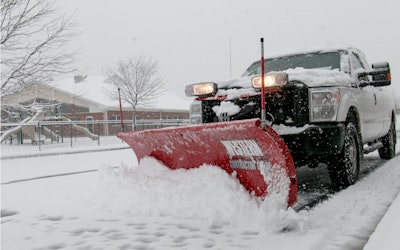
Picture this: The contracts are signed, the plows are prepped, the crews are standing by, the snow removal equipment is staged, the de-icing product is in the hopper—and yet, the anticipated snow turns out to be a no-show.
The lack of snow in various areas throughout the country caused many snow professionals to wonder whether that big storm would ever come roaring in.
In fact, many snow professionals summed up the 2022-2023 snow season in the same way: “We just didn’t get that much snow.”*
“We had the contracts lined up and were more than prepared to do battle with ‘Father Winter,’” says Andrew Grider, president of Southern Sun Landscaping, which services the Roanoke, Va., and Richmond, Va., areas. “Despite meticulous preparations, our region received record low snowfall last season, a stark contrast to the previous season when our trucks were dispatched across the state. Although our region does not get as much snow as regions farther north, for the first time in nearly a decade, I didn't drop a plow blade. This unexpected turn resulted in a significant loss in revenue.”
Aside from the hope that it “snows on” for the 2023-2024 season, here’s what else snow professionals had to say about the snow industry’s challenges, trends and future expectations.
Challenges
Kris Kiser, president and CEO of the Outdoor Power Equipment Institute, notes that while some pockets of the country did all right such as in the Upper Midwest, overall, marketplace conditions were slow.
“The snow market is so dependent on weather, and of course, late snows are not nearly as helpful as early snows,” Kiser says. “Then, if you’re not able to rely on pushing snow to get you through the winter, you’re in a more challenging cash position come spring for purchases.”
To make up for the lack of snowfall, some companies became creative in finding other sources of revenue.
“When snow doesn’t come in those months, we just looked for other avenues of revenue such as starting earlier on mulching sites and rejuvenation pruning,” says Andrew Cosby, branch manager of The Davey Tree Expert Co., in Glen Allen, Va.
David McWeeney, president of operations of DMC Snow in Montgomeryville, Pa., says having a balanced mix of fixed and per-event clients can fill the gap as well.
“We try to balance that out so that we have flexibility when we get a snowless winter—seasonal contracts that keep you afloat,” McWeeney says.
In addition to a light snowfall year, other challenges within the industry included rising costs and of course, labor. The good news: the supply chain problems seem to be subsiding.
“While supply chain issues have been a significant concern in the recent past, we believe these challenges are beginning to subside, and we don't anticipate them being as prevalent this season compared to recent years,” Grider says. “However, past shortages have instilled in us a proactive approach, compelling us to anticipate equipment and supply needs far in advance.”
To ensure crews have all the materials they need on hand, Dunham’s Lawn Care in Dayton, Ohio, keeps up its relationships with suppliers.
“We recommend having good relationships with suppliers of salt and de-icing materials,” says Sabrina Dunham, co-owner of Dunham's Lawn Care. “The last thing a landscaper needs is to be left unable to secure materials during a storm. Our organization is contacted via text message if our supplier opens during nontraditional business hours for an upcoming storm.”
When it comes to rising costs, Grider says the increased pricing has pushed his company to adjust its pricing.
“Everything in the industry has gone up from the cost of equipment to parts, labor, de-icing chemicals, insurance, fuel and more,” Grider says.
Of course, labor has continued to be a major challenge within the industry, especially postpandemic, making it difficult for companies to function as their normal capacity.
Some companies such as Southern Sun Landscaping have filled that labor void with subcontractors.
“We’ve embraced a hybrid approach, combining the strengths of our in-house employees with those of subcontractors,” Grider says. “Collaborating with local businesses not only bridges the labor gap but also reinforces the close-knit sense of community inherent in the snow removal industry.”
The Davey Tree Expert Co. has taken a different approach to labor, hiring an employee experience specialist whose sole role is helping to train new hires and retrain seasoned employees.
“We’re focused on keeping employees warm and happy during those storms, and we’re not only focused on retaining them during the snow season but rather all year round,” Cosby says. “(Since hiring the employee experience specialist), we’ve had the highest retention rates for our region than we’ve ever had with Davey.”
Trends
Less snowfall
As discussed above, some regions have experienced less snowfall than in the past.
“In Ohio, it seems that we tend to get less and less snow each year and more ice, and it seems winter precipitation overall is delayed,” Dunham says, noting that working in icy conditions can be much more challenging and unsafe than simply snowy conditions. “November and December temperatures seem to be warmer, which prevents snow services from not picking up until January and February.”
Dunham says this has influenced the way customers prefer to structure their contracts, with most customers opting for the pay-per-incident contract.
“In this way, they are taking the chance that it will snow only a few times each season while paying a higher price per incident,” Dunham says.
When the storms do come rolling in, Dunham says Dunham's Lawn Care gets slammed with snow removal requests from clients who have not secured services in advance or who have secured a service provider who did not show up.
“I personally answered our company phones one snow day this past season, and we had over 25 calls for snow removal in just a few short hours,” Dunham says. “There is definitely a need to be able to provide emergency snow services for these types of customers. Reliable snow removal companies who have the capacity to take on more accounts can charge a premium for these one-time removals.”
High demand
Despite the recent lack of snow, several many companies, like Dunham’s and Southern Sun Landscaping, saw a surge in demand for their services.
Grider believes this was shaped by the following factors:
- Post-COVID labor shortages and supply chain issues seemed to have frustrated many snow removal providers, leading some to even drop the service altogether and/or retire early. In turn, many properties sought to replace those who were no longer providing snow removal services.
- Previous seasons’ intense storms spurred many property owners/managers to seek out services more proactively, not wanting to be caught off-guard again.
- The challenges of previous seasons exposed providers who were inconsistent in their service or not as well prepared.
DMC Snow experienced a similar uptick.
“We’re seeing that the companies that did snow last year are no longer operating, so we’re seeing a 100 percent increase from last year,” McWeeney says.
Dunham says she’s also noticed that many businesses are trying to secure services earlier each year, some as early as August.
“My assumption is that businesses are looking for a reliable contractor for snow removal services, and that due to workforce concerns, it's becoming more challenging each season," Dunham says.
Equipment and tech
Recent updates to equipment and technology have also made it easier for snow care companies to shoulder the workload during the season.
“We’ve been learning about the different types of equipment available to us and thinking about how we can do better with the equipment we have,” Cosby says. “We’re seeing some modifications that’ve been done to better service some sites.”
Grider agrees that the snow industry has been more inclined in recent years to leverage technology.
For example, Southern Sun has integrated digital tools for real-time tracking of trucks and equipment, route optimization and photographic technology that allows crew members to take before and after geotagged photos while on-site. The geo-tagged photos include location and time data, and when combined with real-time tracking of trucks, they enhance the company’s service documentation and transparency and provide invaluable data for internal review and quality assurance processes, according to Grider.
“The integration of technological tools not only enhances our operational efficiency but also ensures we remain connected with our teams, especially during critical operations,” Grider says.
On the equipment side, Kiser notes that the industry saw new equipment—both in the gas and battery-powered segments—come on the scene at recent trade shows such as Equip Expo.
When it comes to battery power, Kiser says the industry is beginning to gain a track record.
“There is a lot of battery equipment in this space, and you’re starting to get that commercial use,” Kiser says. “So far, the community reaction is pretty positive.”
The forecast ahead
Looking forward, several snow professionals are hopeful based on early forecast projections for the 2023-2024 season.
“We keep tabs on a lot of different sources to try and predict what the winter is going to bring to us, and they are predicting a similar winter to what we had in 2018, which brought us large amounts of snow, so we’re just doing a lot of preparation and making sure our equipment is up to date,” Cosby says.
Grider agrees.
“With this year's preseason forecasts hinting at record-breaking snowfall for our area, there's a renewed sense of optimism within our team,” Grider says. “In anticipation, we're meticulously planning routes, determining equipment and team allocations, conducting preseason equipment maintenance, replenishing supplies, devising contingency strategies and refreshing our employees' knowledge of snow removal operations and strategies.”
*Editor’s Note: While many parts of the country did not receive the snowfall they expected, some parts of the country did. However, the majority of snow contractors SnowPRO interviewed said they did not receive the snowfall they anticipated.


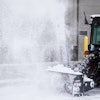

![Doosan Bobcat Wacker Neuson Stack 2ec Js Pb V6e[1]](https://img.greenindustrypros.com/mindful/acbm/workspaces/default/uploads/2025/12/doosan-bobcat-wacker-neuson-stack2ecjspbv6e1.CPyyz8ubHn.png?auto=format%2Ccompress&bg=fff&fill-color=fff&fit=fill&h=100&q=70&w=100)
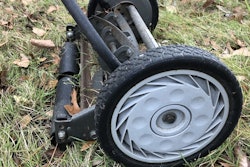




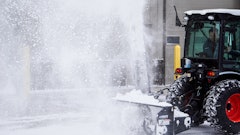

![Doosan Bobcat Wacker Neuson Stack 2ec Js Pb V6e[1]](https://img.greenindustrypros.com/mindful/acbm/workspaces/default/uploads/2025/12/doosan-bobcat-wacker-neuson-stack2ecjspbv6e1.CPyyz8ubHn.png?ar=16%3A9&auto=format%2Ccompress&bg=fff&fill-color=fff&fit=fill&h=135&q=70&w=240)
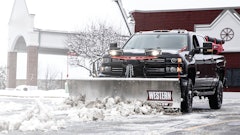
![Gravely Pro Turn Mach One My23 Dsc03139 Edit 1200x800 5b2df79[1]](https://img.greenindustrypros.com/mindful/acbm/workspaces/default/uploads/2025/10/gravely-pro-turn-mach-one-my23-dsc03139-edit-1200x800-5b2df791.BucBnDoN22.jpg?ar=16%3A9&auto=format%2Ccompress&fit=crop&h=135&q=70&w=240)
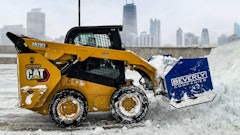

![Kubota Snow ah3 Sgv25ua[1]](https://img.greenindustrypros.com/mindful/acbm/workspaces/default/uploads/2025/10/kubota-snowah3sgv25ua1.bAUoUSziui.png?ar=16%3A9&auto=format%2Ccompress&bg=fff&fill-color=fff&fit=fill&h=135&q=70&w=240)


